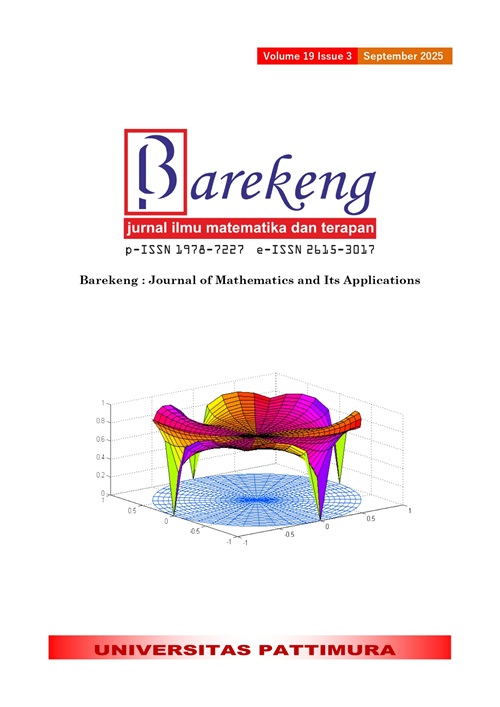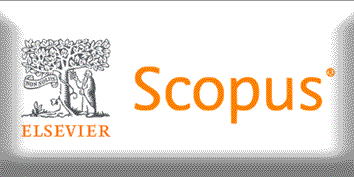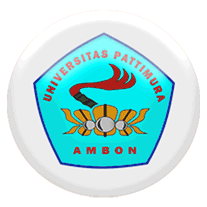STABILITY ANALYSIS OF GAMBLING BEHAVIOR MODEL WITH COGNITIVE BEHAVIORAL THERAPY TREATMENT
Abstract
Gambling, driven by the desire for quick profits, involves individuals or groups betting money, often resulting in significant financial consequences. Gambling behavior can be influenced by the environment or society. Thus, the dynamics of environmental influences on gambling behavior can be mathematically modeled using differential equations. This study presents a mathematical model of the environmental impact on the dynamics of the SI1I2T (Susceptible-Infective1-Infective2-Treatment) population of gamblers undergoing cognitive behavioral therapy (CBT). The model replaces the recovered sub-population with a treatment sub-population, representing individuals receiving CBT, as there is no definitive cure for gambling addiction. It consists four sub-populations: It consists of four sub-populations: (S) individuals susceptible to gambling, (I₁) gamblers who are not yet addicted, (I₂) addicted gamblers, and (T) individuals undergoing treatment but at risk of relapse. Mathematical analysis identifies two equilibrium points: a gambling-free equilibrium and an endemic gambling equilibrium. Furthermore, the results of the stability analysis using the linearization method shows that the balance point has a asymptotically stability characteristic requirement. The basic reproduction number ( ) was calculate and resulted if < 1, then the free gambler population equilibrium point is asymptotically stable, and vice versa. Based on the results of the data analysis, the value of = 0.5. This value is less than 1, so the equilibrium point obtained is the free gambler population and asymptotically stable equilibrium point. This means that the population will be free from gambling behavior. Numerical simulation represents the results of the analysis that has been obtained. Providing cognitive behavioral therapy (CBT) to gamblers in treatment can help reduce the gambler population. The population growth will decrease in such a way that it will eventually lead to a gambling-free population
Downloads
References
Juni, A;, PENANGGULANGAN KEJAHATAN PERJUDIAN KUPON PUTIH DI KABUPATEN SOPPENG, MAKASSAR: Doctoral Dissertation, Universitas Hasanuddin, 2013.
Y. S. L. Tae Sug Do, "A DIFFERENTIAL EQUATION MODEL FOR THE DYNAMICS OF YOUTH GAMBLING," Osong Public Health Res Perspect, vol. 5, no. 4, pp. 233 - 241, 2014, Juli. doi: https://doi.org/10.1016/j.phrp.2014.06.008
T. S. D. Young S. Lee, "A MATHEMATICAL MODELING APPROACH TO GAMBLING AMONG OLDER ADULTS," Applied Mathematics and Computation, vol. 221, pp. 403 - 410, 2013. doi: https://doi.org/10.1016/j.amc.2013.05.075
Astuti, V; Yulida, Y; Thresye, T, “MODEL MATEMATIKA PENYEBARAN PENYAKIT DIARE DENGAN ADANYA TREATMENT,” Epsilon : Jurnal Matematika Murni dan Terapan, vol. 15, no. 1, pp. 46 - 57, 2021. doi: https://doi.org/10.20527/epsilon.v15i1.3152
Sidik, A.T.R; Sari, L.N; Ismail, A;, "ANALISIS KESTABILAN MODEL SITR PADA PENYEBARAN PENYAKIT HEPATITIS A DENGAN VAKSINASI," Research in the Mathematical and Natural Sciences, vol. 1, no. 1, pp. 1 - 11, 2022.doi: https://doi.org/10.55657/rmns.v1i1.1
T. L. Y. W. X. C. H. W. Y. L. Yu Kong, "DYNAMICS ANALYSIS OF AN ONLINE GAMBLING SPREADING MODEL ON SCALE-FREE NETWORKS.," Advances in Difference Equations , vol. 11, 2021. doi: ttps://doi.org/10.1186/s13662-020-03165-z
B. K. O. B. M. R. E. H. L. Driss Kada, "OPTIMAL CONTROL APPROACH OF DISCRETE MATHEMATICAL MODELING OF THE SPREAD OF GAMING DISORDER IN MOROCCO AND COST-EFFECTIVENESS ANALYSIS," Discrete Dynamics in Nature and Society, vol. 2021, 2021. doi: https://doi.org/10.1155/2021/5584315
Y. G. Tingting Li, "Optimal Control Strategy of an Online Game Addiction Model with Incomplete Recovery," Journal of Optimization Theory and Applications, vol. 195, no. 3, pp. 780 - 807, 2022. doi: https://doi.org/10.1007/s10957-022-02123-x
Fred, Brauer; dkk;, MATHEMATICAL MODELSMIN POPULATION BIOLOGY ANDA EPIDEMIOLOGY SECOND EDITION, New York: Springer - Verlag, 2010.
H. Seno, "A mathematical model of population dynamics for the internet gaming addiction.," Nonlinear Analysis: Modelling and Control, vol. 26, no. 5, pp. 861-883, 2021. doi: https://doi.org/10.15388/namc.2021.26.24177
N. F. B. D. Akçayır M, "EMERGING GAMBLING PROBLEMS AND SUGGESTED INTERVENTIONS," A Systematic Review of Empirical Research. J Gambl Stud, vol. 39, no. 2, pp. 857 - 882, 2023. doi: https://doi.org/10.1007/s10899-022-10122-w
Hidayat, R;, ANALISIS KRIMINOLOGI TERHADAP PERJUDIAN SABUNG AYAM DI DESA LUBUK BENDAHARA, RIAU: Doctoral Dissertation, Universitas Islam Riau, 2018, p. 1.
Perko, L;, DIFFERENTIAL EQUATION AND DYNAMICS SYSTEM, Third Edition, New York: Springer - Verlag, 2001.
Nababan, S;, PERSAMAAN DIFERENSIAL ORDE SATU, Indonesia: Universitas Terbuka, 2021.
Ross, S. L;, Introduction to Ordinary Differential Equations, Fourth Edition, New York: John Willey, 1989.
W. Boyce, R. DiPrima and D. Meade, ELEMENTARY DIFFERENTIAL EQUATIONS AND BOUNDARY VALUE PROBLEMS, New York: John Wiley & Sons, 2021.
A. S. W. M. A. K. O. S. Yuni Yulida, "SACR EPIDEMIC MODEL FOR THE SPREAD OF HEPATITIS B DISEASE BY CONSIDERING VERTICAL TRANSMISSION," Barekeng : Jurnal Ilmu Matematika dan Terapan, vol. 18, no. 4, pp. 2491 - 2504, 2024. doi: https://doi.org/10.30598/barekengvol18iss4pp2491-2504
M. L. A. B. N. S. Annisa Zaen Febryantika, "MODEL OF TRANSMISSION COVID - 19 USING SIQRD MODEL WITH THE EFFECT OF VACCINATION IN MATARAM," Barekeng : Jurnal Ilmu Matematika dan Terapan, vol. 17, no. 3, pp. 1265 - 1276, 2023. doi: https://doi.org/10.30598/barekengvol17iss3pp1265-1276
Wahyudi, R; Sriningsih, R;, "MODEL MATEMATIKA PENGARUH LINGKUNGAN TERHADAP DINAMIKA JUMLAH POPULASI PENJUDI," Journal of Mathematics UNP, vol. 6, no. 2, pp. 51 -56, 2021.
A. L. O. B. M. R. E. H. L. Driss Kada, "Mathematical Modeling and Stability Analysis of Endemic Equilibrium Point of Gaming Disorder," Journal Mathematics Computer Science, vol. 11, no. 5, pp. 6279 - 6295, 2021.
Copyright (c) 2025 Fazat Asfa Niswah, Kartika Nugraheni, Irma Fitria, Retno Wahyu Dewanti

This work is licensed under a Creative Commons Attribution-ShareAlike 4.0 International License.
Authors who publish with this Journal agree to the following terms:
- Author retain copyright and grant the journal right of first publication with the work simultaneously licensed under a creative commons attribution license that allow others to share the work within an acknowledgement of the work’s authorship and initial publication of this journal.
- Authors are able to enter into separate, additional contractual arrangement for the non-exclusive distribution of the journal’s published version of the work (e.g. acknowledgement of its initial publication in this journal).
- Authors are permitted and encouraged to post their work online (e.g. in institutional repositories or on their websites) prior to and during the submission process, as it can lead to productive exchanges, as well as earlier and greater citation of published works.






1.gif)



